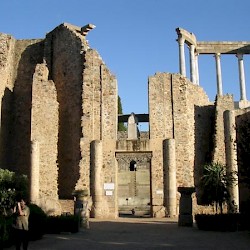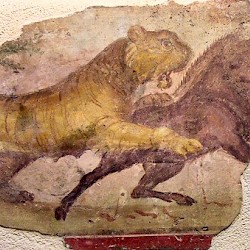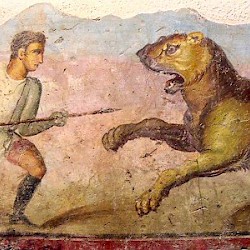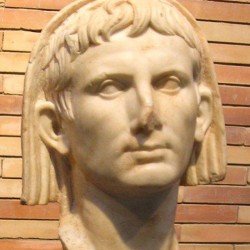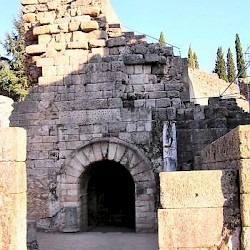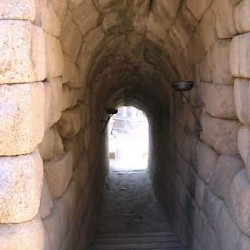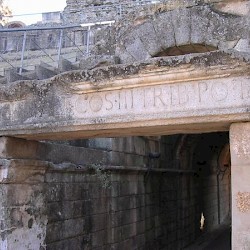Augusta Emerita, Theater
Augusta Emerita: Roman city in western Spain, modern Mérida, capital of the province of Lusitania..
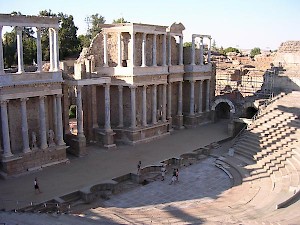
The building inscription over the doorways of the theater of Augusta Emerita offers valuable information about the date on which it was built:
M. Agrippa L.F. cos III. trib. pot. III
Marcus Agrippa, son of Lucius, three times consul,
in the third year of his tribunicial powersnote
This suggests that 16-14 BCE was the date of the monument's completion, which again suggests that actual building may have started in 20 or 19.
The theater, which was - just like the adjacent amphitheater - partly dug into the slope of a hill, could accomodate about 6,000 people, who could enter the building through thirteen doors. The spectacular stage façade (scaenae frons) was built in 105, during the reign of the Spanish emperor Trajan. On a base of red natural stone are two tiers of Corinthian columns, made of blueish marble. The capitals and bases are made of white marble. Between them were statues of warriors and local politicians, and feities like Proserpina, Pluto, and Ceres. The frescos may date from this age as well.
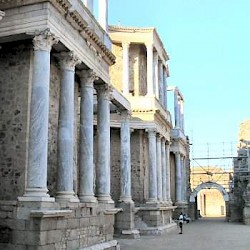 Augusta Emerita, Theater, stage |
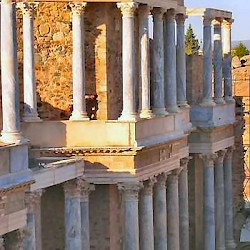 Augusta Emerita, Theater, stage |
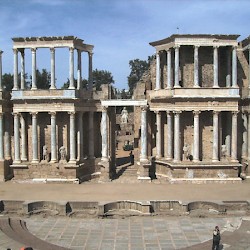 Augusta Emerita, Theater, stage |
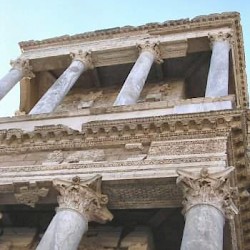 Augusta Emerita, Theater, stage |
A third building fase can be dated to 333-335 (during the reign of Constantine I the Great). In the Middle Ages, it fell into abuse.
In the porticus post scaenam, the garden that was often behind the stage, one could find a small sanctuary that was, to judge from the find of a splendid bust of the emperor Augustus, used for the imperial cult.
Excavation of the theater was started in 1910; it has been reused for classical performances since 1933; and reconstruction began in 1964. Only the theaters of Orange, Sabratha, and Aspendus are better preserved.
